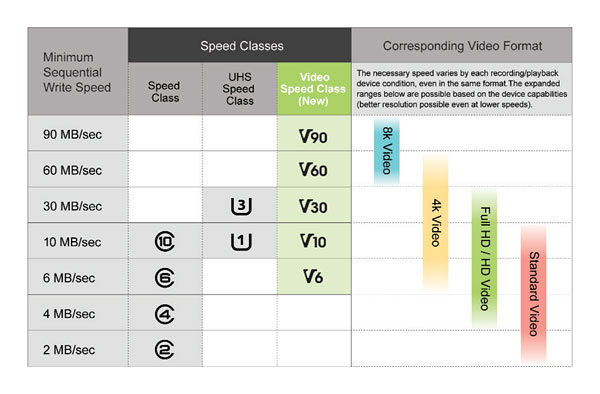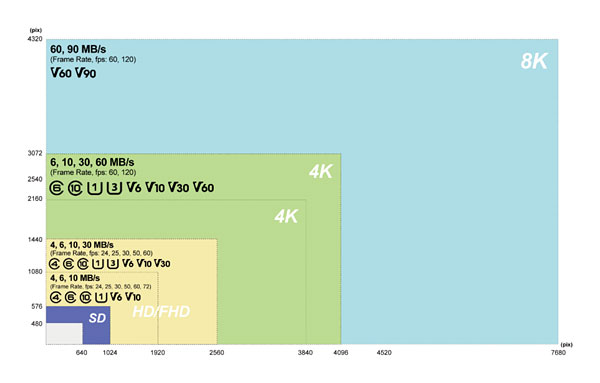SD Association unveils new Video Speed Class ratings, even faster flash cards
posted Wednesday, March 2, 2016 at 5:54 PM EST

Do you have the need for speed? If so, your next flash card could satisfy that desire -- at least, if you're willing to wait a little while to buy it. Last week, the SD Association -- the industry body behind the incredibly popular Secure Digital card format -- unveiled new, faster speed classes for SD cards, as well as a new branding scheme that will see even more confusing little icons sprinkled all over the packaging.
As well as allowing for faster flash cards, the new Video Speed Class (VSC) ratings are intended to resolve a few problems with its earlier standards, something the organization outlines in a newly-published white paper on the topic. From the manufacturers' point of view, the older standards had become rather limiting. With the introduction of a range of specified block sizes and address saving commands for VSC-rated cards, as well as support for simultaneous multi-file recording, the new Video Speed Class scheme will address these concerns.

From a consumer point of view, the scheme is intended to alleviate confusion by recommending that manufacturers of SD-compatible products simply state the bandwidth requirements required in their documentation, rather than calling for specific speed classes of cards. (We're not quite sure how this will resolve anything, given that the earlier rating scheme was likewise based around minimum sequential write speeds for the cards, but be that as it may, the new scheme will at least extend the speed ratings to allow for ever-faster cards, which is certainly good news for photographers who need high performance for ultra high-def video capture, etc.)
Once Video Speed Class-rated SD cards -- which will still bear SDHC or SDXC and UHS-I or UHS-II branding -- hit the market, they'll include logos for a range of video speed classes as you can see in the chart above. The new V6 rating will correspond with Speed Class 6 on existing flash cards by providing a guaranteed 6MB/second write speed, while the V10 rating will mirror Speed Class 10 or UHS Speed Class 1 ratings. The V30 rating, meanwhile, will be analogous to the UHS Speed Class 3. And above all of these, new V60 and V90 ratings will offer minimum sequential write speeds of 60 or 90MB/second, respectively. This, says the SD Association, will be sufficient to provide for 8K video capture at up to a 120 frames-per-second capture rate.

But there's a little more to it than that. Thanks to the new protocols in play behind the scenes, a card could be capable of gaining a Video Speed Class rating that's far superior to its current UHS or standard Speed Class ratings. Whether that will be the exception or the norm isn't immediately clear from the white paper, but the SD Association speculates that "an SD memory card may meet V30 requirements, by supporting 30 MB/s capture using the Video Speed Class protocol, yet only meet C10 requirements, supporting 10 MB/s capture with the [existing] Speed Class protocol."
At the end of the day, what you'll need to know as a consumer is this: If your device and SD card are Video Speed Class-rated, you'll want to pay attention to these ratings in favor of the earlier UHS Speed Class or Speed Class ratings. And with a little luck and a bit of time for the manufacturers to work their magic, you might have access to a flash card with triple the speed provided by current cards in the not-too-distant future...
(Seen via DIY Photography.)